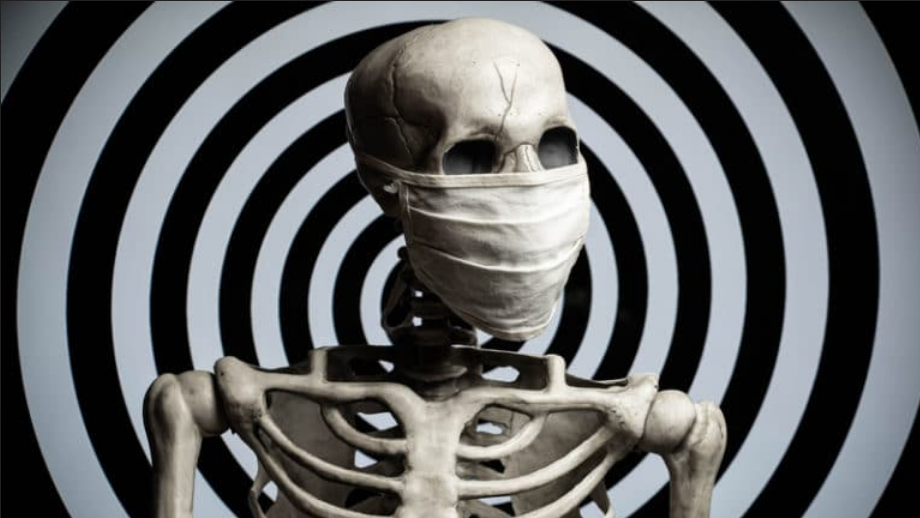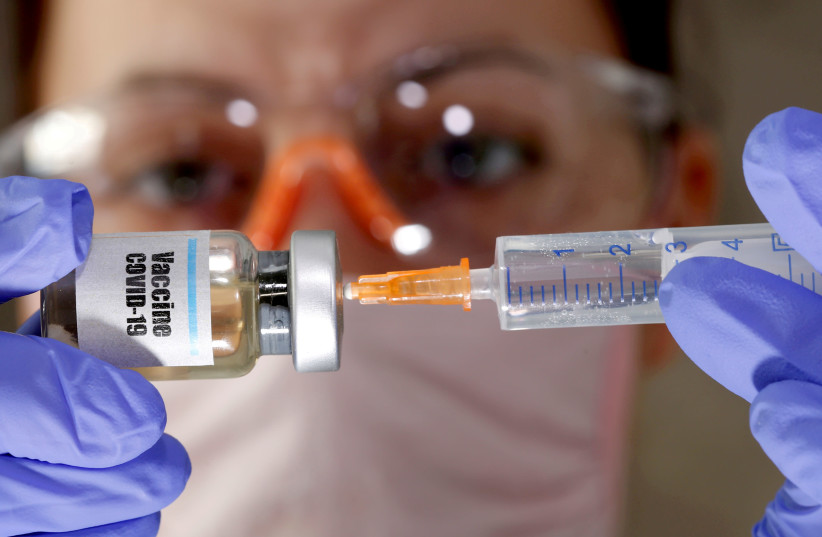- The Facts:
CDC director Robert Redfield said on Wednesday that wearing a mask might be “more guaranteed” to protect an individual from the coronavirus than a vaccine.
- Reflect On:
Why is there so much conflicting information out there? Why is it so difficult to arrive at any concrete truth? How does the politicization of science play a role?
What Happened: Centers For Disease Control (CDC) Director Robert Redfield recently stated that wearing a mask may be “more guaranteed” to protect an individual from the coronavirus than a vaccine. This calls into question the efficacy of the vaccine, which is set to make its way into the public domain at the end of this year, or shortly after that. We thought we’d cover this story to bring up the efficacy of vaccines in general, and the growing vaccine hesitancy that now exists within a number of people, scientists and physicians across the world.
“I’m not gonna comment directly about the president, but I am going to comment as the CDC director that face masks, these face masks, are the most important powerful public health tool we have.” – Redfield
Not long ago, many scientists presented facts about vaccines and vaccine safety at the recent Global Health Vaccine Safety summit hosted by the World Health Organization in Geneva, Switzerland. At the conference, Professor Heidi Larson, a Professor of Anthropology and the Risk and Decision Scientist Director at the Vaccine Confidence Project emphasized the issue of growing vaccine hesitancy.
The other thing that’s a trend, and an issue, is not just confidence in providers but confidence of health care providers, we have a very wobbly health professional frontline that is starting to question vaccines and the safety of vaccines. That’s a huge problem, because to this day any study I’ve seen… still, the most trusted person on any study I’ve seen globally is the health care provider…”
Redfield’s comments came after President Trump downplayed the effectiveness of wearing mask, and Trump also stated that Covid would probably go away without a vaccine, referring to the concept of ‘herd immunity’ as practiced in Sweden, but has also been quite outspoken about the fact that a vaccine may arrive by November.
When it comes to the COVID vaccine, multiple clinical trials for COVID-19 vaccines have shown severe reactions within 10 days after taking the vaccine. You can read more about that here. The US government and Yale University also recently collaborated in a clinical trial to determine the best messaging to persuade Americans to take the COVID-19 vaccine. You can read more about that here.
Are Masks Effective?
Multiple studies have claimed to show definitively that mask-wearing effectively prevents transmission of the coronavirus, especially recent ones. This seems to be the general consensus and the information that’s come from our federal health regulatory agencies. There are also multiple studies calling the efficacy of masks into question. For example, a fairly recent study published in the New England Medical Journal by a group of Harvard doctors outlines how it’s already known that masks provide little to zero benefit when it comes to protection a public setting. According to them,
We know that wearing a mask outside health care facilities offers little, if any, protection from infection. Public health authorities define a significant exposure to Covid-19 as face-to-face contact within 6 feet with a patient with symptomatic Covid-19 that is sustained for at least a few minutes (and some say more than 10 minutes or even 30 minutes). The chance of catching Covid-19 from a passing interaction in a public space is therefore minimal. In many cases, the desire for widespread masking is a reflexive reaction to anxiety over the pandemic.
You can read more about that story here and find other complimenting studies.
When it comes to masks, there are multiple studies on both sides of the coin.
Then we have many experts around the world calling into question everything from masks to lockdown. For example, The Physicians For Informed Consent (PIC) recently published a report titled “Physicians for Informed Consent (PIC) Compares COVID-19 to Previous Seasonal and Pandemic Flu Periods.” According to them, the infection/fatality rate of COVID-19 is 0.26%.
They are one of many who have emphasized this point.
More than 500 German doctors & scientists have signed on as representatives of an organization called the “Corona Extra-Parliamentary Inquiry Committee” to investigate what’s happening on our planet with regards to COVID-19, and also make similar points. You can read more about that story here.
Again, there are many examples from all over the world from various academics, doctors and scientists in the field.
This is why there is so much confusion surrounding this pandemic, because there is so much conflicting information that opposes what we are hearing from our health authorities. Furthermore, a lot of information that opposes the official narrative has been censored from social media platforms, also raising suspicion among the general public.
How Effective Are Vaccines?
Vaccines have been long claimed to be a miracle, and the most important health intervention for the sake of disease prevention of our time. But as mentioned above, vaccine hesitancy is growing, and it’s growing fast.
According to a study published in the journal EbioMedicine,
Over the past two decades several vaccine controversies have emerged in various countries, including France, inducing worries about severe adverse effects and eroding confidence in health authorities, experts, and science. These two dimensions are at the core of the vaccine hesitancy (VH) observed in the general population. These two dimensions are at the core of the vaccine hesitancy (VH) observed in the general population. VH is defined as delay in acceptance of vaccination, or refusal, or even acceptance with doubts about its safety and benefits, with all these behaviors and attitudes varying according to context, vaccine, and personal profile, despite the availability of vaccine services. VH presents a challenge to physicians who must address their patients’ concerns about vaccines..
In the United States, the Vaccine Adverse Event Reporting System (VAERS) shows what vaccines have resulted in deaths, injury, permanent disabilities and hospitalizations. The National Childhood Vaccine Injury act has also paid out nearly $4 billion dollars to families of vaccine injured children.
According to a MedAlerts, the cumulative raw count of adverse events from measles, mumps, and rubella vaccines alone was: 93,929 adverse events, 1,810 disabilities, 6,902 hospitalizations, and 463 deaths. What is even more disturbing about these numbers is that VAERS is a voluntary and passive reporting system that has been found to only capture 1% of adverse events.
The measles vaccine has also been plagued with a lack of effectiveness, with constant measles outbreaks in heavily vaccinated population pointing towards a failing vaccine. You can read more about that in-depth and access more science on it here. In 2015, nearly 40 percent of measles cases analyzed in the US were a result of the vaccine.
It’s not just the MMR vaccine that shows a lack of effectiveness. For example, a new study published in The Royal Society of Medicine is one of multiple studies over the years that has emerged questioning the efficacy of the HPV vaccine. The researchers conducted an appraisal of published phase 2 and 3 efficacy trials in relation to the prevention of cervical cancer and their analysis showed “the trials themselves generated significant uncertainties undermining claims of efficacy” in the data they used. The researchers emphasized that “it is still uncertain whether human papillomavirus (HPV) vaccination prevents cervical cancer as trials were not designed to detect this outcome, which takes decades to develop.” The researchers point out that the trials used to test the vaccine may have “overestimated” the efficacy of the vaccine.
It’s one of multiple studies to call into question the efficacy and safety of the HPV vaccine. It’s also been responsible for multiple deaths and permanent disabilities.
Another point to make regarding vaccine injury is that data was collected from June 2006 through October 2009 on 715,000 patients, and 1.4 million doses (of 45 different vaccines) were given to 376,452 individuals. Of these doses, 35,570 possible reactions (2.6 percent of vaccinations) were identified. This is an average of 890 possible events, an average of 1.3 events per clinician, per month. This data was presented at the 2009 AMIA conference. This data comes 2010 HHS pilot study by the Federal Agency for Health Care Research (AHCR) that found that 1 in every 39 vaccines causes injury, a shocking comparison to the claims from the CDC of 1 in every million. You can access that report and read more about it here.
The Takeaway:
Become Part of CE’s Inner Circle
Collective Evolution is one of the world’s fastest-growing conscious media and education companies providing news and tools to raise collective consciousness. Get inside access to Collective Evolution by becoming a member of CETV.
Stream content 24/7 and enjoy mind-expanding interviews, original shows, documentaries and guided programs.
Click here to start a FREE 7-Day Trial and help conscious media thrive!
Related posts:
Views: 0
 RSS Feed
RSS Feed

















 September 26th, 2020
September 26th, 2020  Awake Goy
Awake Goy 







 Posted in
Posted in  Tags:
Tags: 
















